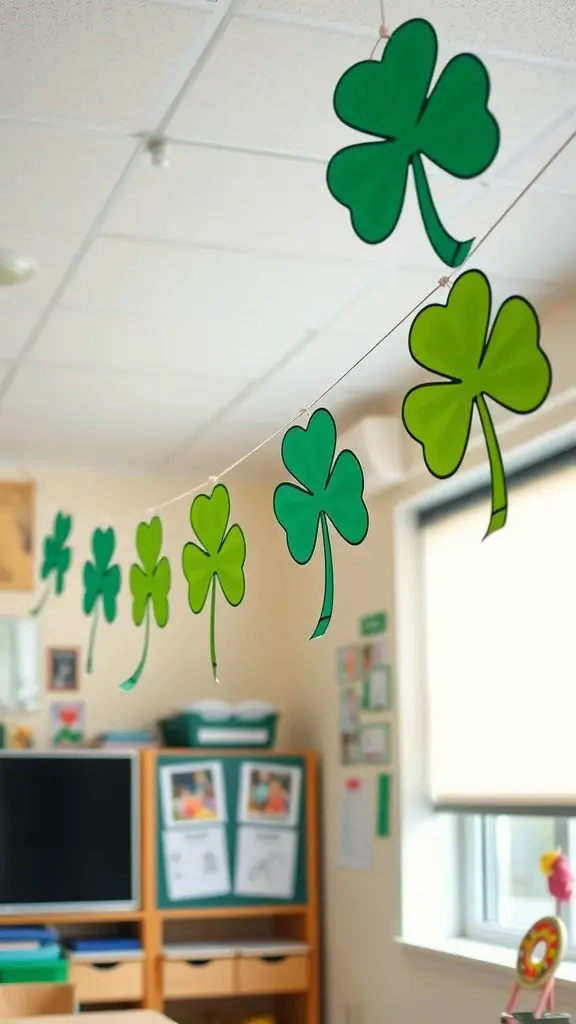Imagine immersing yourself in the world of portrait painting, where each brushstroke reveals the essence of your subject. In this guide, you will explore various techniques that can enhance your creative process, helping you to translate emotion and depth onto the canvas. From understanding composition to mastering color theory, you’ll gain insights that will ignite your artistic expression. Whether you’re a novice or an experienced artist, unlocking these portrait painting techniques will empower you to bring your vision to life and create stunning pieces that resonate with viewers.
Understanding Portrait Painting
A portrait painting serves as a powerful reflection of identity, emotion, and character. By capturing the essence of a person, you create an intimate connection between the subject and the viewer. Understanding the intricacies of portrait painting allows you to probe deeper into the techniques and principles that enhance your artistic expression.
Historical Context
Context is important when exploring portrait painting as it has evolved through various art movements and time periods. From classical interpretations in the Renaissance to contemporary approaches, each era has contributed unique styles and philosophies that influence how you perceive and create portraits today.
Key Elements of Portraits
After grasping the historical influences, it is vital to explore the key elements that define a successful portrait. These elements include composition, use of color, light and shadow, and emotional expression, which work together to create a compelling representation of your subject.
Hence, focusing on these key elements enables you to develop a deeper understanding of what makes a portrait resonate. Mastering composition will guide where to place your subject within the frame, while thoughtful use of color can evoke specific emotions. Light and shadow add depth and dimension, allowing viewers to feel the three-dimensionality of your work. Finally, capturing genuine emotional expression brings your portrait to life, creating a memorable visual experience for your audience.
The Creative Process
Now that you’ve inspired yourself through various sources, it’s imperative to understand the phases that comprise the creative process in portrait painting. This journey involves more than merely picking up a brush; it requires a rhythmic flow of thought, emotion, and technique that will guide you toward a successful artwork. Embrace spontaneity while maintaining a structured approach, as this balance will enhance your creative output and lead to captivating portraits that resonate with viewers.
Inspiration and Conceptualization
The key to a stunning portrait lies in the inspiration that fuels your creativity. Whether it stems from nature, personal experiences, or historical references, identifying a source of inspiration is vital. Once you are inspired, conceptualization allows you to define what you want to express in your artwork, guiding you through the decision-making process as you prepare to translate your vision onto the canvas.
Planning and Composition
Conceptualization sets the stage for effective planning and composition in your portrait painting. Before you begin, it’s imperative to lay out your ideas. Consider the elements of composition—like focal points, balance, and negative space—that will shape your painting. Each decision, from poses to color schemes, should serve your artistic vision and enhance the overall narrative of the portrait.
This planning phase is where you refine your concept and visualize the final piece. Sketching thumbnails or practicing specific poses will help you assess how various elements interact within the frame. Think about your subject’s personality and how best to convey it through placement and style. This preparation will empower your painting process and ensure a more coherent and engaging final artwork.
Techniques for Portrait Painting
If you want to elevate your portrait painting skills, exploring various techniques is important. Different methods can offer unique approaches to capturing the essence of your subjects. By experimenting with both traditional and contemporary practices, you will discover what resonates most with your artistic vision and style.
Traditional Methods
Painting with traditional methods involves techniques such as underdrawing, layering, and glazing. These time-honored approaches often utilize oil paints and focus on creating realistic textures and tones. Mastering these methods allows you to develop a solid foundation in portrait painting and enhances your ability to depict light and shadow accurately.
Contemporary Approaches
With contemporary approaches, you have the freedom to break away from conventional techniques. You might incorporate mixed media, experimental materials, or digital tools to create dynamic portraits that reflect your personal style. This modern perspective not only allows for greater expression but also opens new avenues for artistic exploration.
Understanding contemporary approaches means embracing innovation in your portrait painting practice. You can combine traditional techniques with modern elements, such as using vibrant colors, abstract forms, or unconventional surfaces. This fusion encourages creative growth and allows you to challenge traditional boundaries, ultimately leading to distinctive and compelling portrait work.
Color Theory and Application
For any successful portrait painter, understanding color theory is an necessary step in creating vivid and lifelike representations. By mastering the relationships between colors, you can enhance the emotional weight and depth of your portraits. This knowledge not only helps in selecting harmonious colors but also guides your decisions on shading, lighting, and highlights that contribute to the overall impact of your work.
Choosing a Palette
Along your painting journey, selecting the right palette is fundamental to achieving the desired mood and effect in your portraits. Consider limiting your colors to a few harmonious hues to create unity. A well-chosen palette can evoke specific emotions and ensure your portrait tells a compelling story through color.
Skin Tones and Textures
By paying attention to skin tones and textures, you can add realism to your portraits. It’s necessary to mix various hues to capture the subtleties in skin color, influenced by light, shadow, and individual characteristics.
Considering the diversity in skin tones is vital for a relatable and authentic portrait. You’ll want to mix colors that reflect the underlying tones—reds, yellows, and blues contribute to the complexity of skin. Additionally, incorporating textures by layering, glazing, and using varying brush techniques can provide depth, simulating realistic skin imperfections and variations. This attention to detail not only enhances the overall portrayal but also showcases your ability to render humanity in your art.
Light and Shadow in Portraits
Not every portrait relies solely on color to convey emotion; light and shadow play pivotal roles in enhancing the depth and narrative of your artwork. These elements help create a three-dimensional feel, allowing you to bring your subject to life on canvas. Observing how light interacts with different surfaces will empower you to manipulate shadow and highlight, guiding the viewer’s eye to the focal points of your portrait.
Understanding Light Sources
Shadow plays an indispensable role in your portrait work. It is the absence of light that carves out shapes and adds richness to the features you depict. Identifying your light sources—whether natural or artificial—will influence the way shadows fall across your subject’s face and body, adding complexity and intrigue to your representation.
Creating Depth and Dimension
To create a sense of depth in your portraits, you must skillfully use light and shadow to model your subject’s facial structure. Variations in shadow can make features appear more prominent, giving life to your painting. Understanding the core concept of chiaroscuro—the contrast between light and dark—will enable you to portray realistic textures and contours, transforming a flat canvas into a vibrant representation of your subject.
Light serves as the foundation for your portrait’s atmosphere. By understanding where your light falls, you can emphasize certain aspects of your subject while downplaying others. Experiment with different angles and intensity of light to see how they affect the mood of your painting. By layering your shadows effectively and rendering highlights, you’ll establish a strong sense of depth, making each portrait not just a representation, but a dynamic story waiting to be explored.
Developing Your Unique Style
Unlike many artists who strictly adhere to established norms, you have the freedom to explore and evolve your own distinctive style in portrait painting. Embracing your individuality allows for richer expression and deeper connection to your work. By combining influences, techniques, and mediums that resonate with you, you can create a signature approach that reflects your artistic voice.
Experimentation and Innovation
Developing your unique style requires a commitment to experimentation and innovation. By stepping outside your comfort zone and trying new techniques, materials, and subjects, you can discover exciting aspects of your creative identity. Allow yourself to make mistakes; each one is a stepping stone towards understanding what resonates with you and where your artistic boundaries lie.
Seeking Feedback and Growth
Against the backdrop of self-discovery, seeking feedback is necessary for your growth as an artist. Collaborating with fellow artists, participating in workshops, or sharing your work with trusted friends provides fresh perspectives that can expand your understanding and enhance your skills.
Growth thrives on external insights and constructive criticism. Actively engaging with feedback helps you identify areas for improvement, challenges your assumptions, and ignites new ideas. Embrace the process, knowing that each critique is an opportunity to refine your technique and deepen your connection to your art. The more you expose your work to different viewpoints, the more you evolve, ultimately leading to a more mature and authentic artistic expression.
Final Words
Taking this into account, unlocking the creative process in portrait painting techniques allows you to fully express your artistic vision. Embrace experimentation, develop your unique style, and continually improve your skills through practice. By understanding the fundamentals and being open to new ideas, you will enhance your ability to capture the essence of your subjects. Stay committed to your journey, and you will find that each portrait not only reflects your artistry but also offers insight into your personal growth as a painter.
FAQ
Q: What are some necessary techniques to start unlocking creativity in portrait painting?
A: To unlock creativity in portrait painting, consider using techniques such as sketching from life to capture natural expressions, experimenting with color palettes to evoke different emotions, and employing various brush strokes to bring texture and depth to your work. Additionally, engaging in exercises like blind contour drawing can help you break free from conventional thought and enhance your observational skills.
Q: How can I overcome creative blocks when painting portraits?
A: Overcoming creative blocks can be achieved by changing your environment, such as finding a new location to paint or simply rearranging your studio. Setting small, achievable goals can also help alleviate the pressure. Experimenting with different mediums, like charcoal, watercolors, or mixed media, may spark inspiration. Lastly, taking breaks and allowing your mind to wander can help rejuvenate your creative energies.
Q: What role does reference material play in enhancing portrait painting skills?
A: Reference materials are significant as they provide a foundation and inspiration for your work. They help in understanding proportions, lighting, and anatomy. Using a variety of references, including photographs and live models, can inform your choices in colors and compositions, thereby enabling you to see different perspectives and approaches to portraying a subject.
Q: Are there specific exercises to enhance creativity in portrait painting?
A: Yes, there are several exercises designed to enhance creativity. One effective method is the “30-minute portrait challenge,” where you set a timer and focus on completing a quick portrait, emphasizing speed over perfection. Another exercise involves painting portraits based on emotional themes, requiring you to think beyond the physical appearance and tap into the subject’s character and story. Regularly participating in art challenges or collaborating with fellow artists can also stimulate new ideas.
Q: How can I incorporate personal experiences and emotions into my portrait work?
A: To incorporate personal experiences and emotions into your portrait paintings, start by reflecting on feelings or stories that resonate with you. Use symbolic colors, shapes, or abstract elements that evoke those experiences. You may also want to consider painting portraits of subjects that hold personal significance or create visual narratives that represent your journey. This approach can add depth and authenticity to your work, making it more meaningful.




